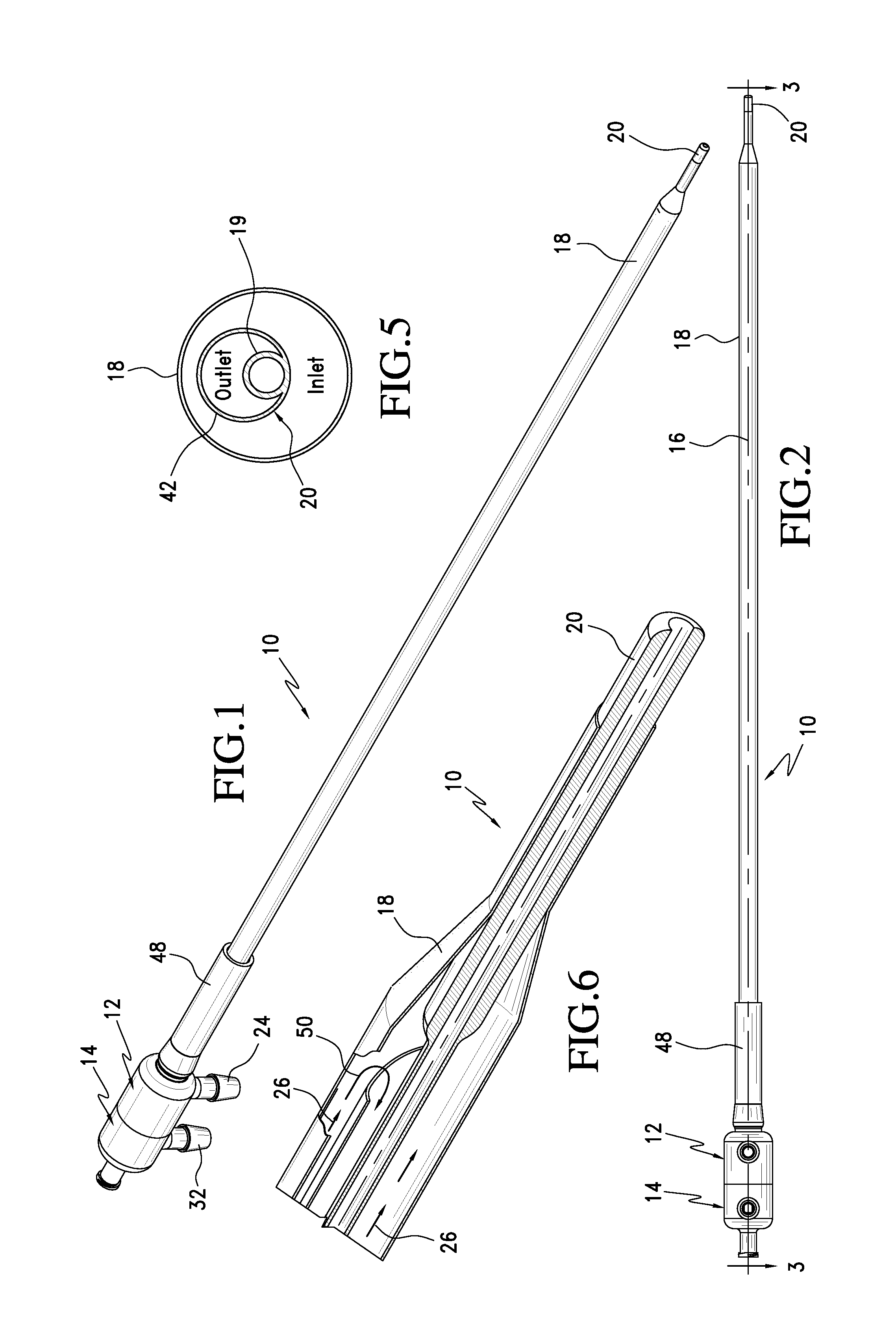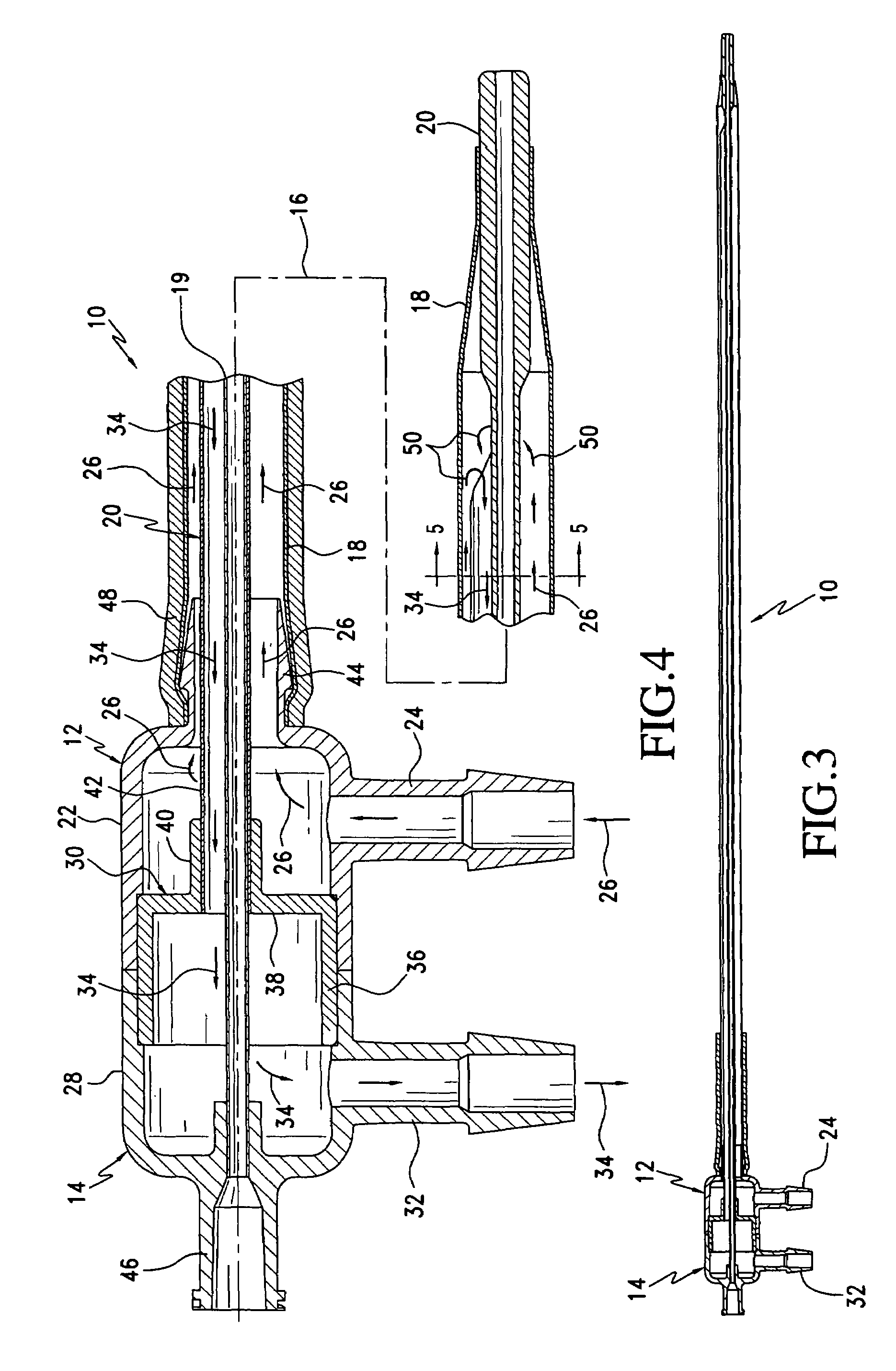Heat exchange catheter with multi-lumen tube having a fluid return passageway
a multi-lumen tube and heat exchange technology, which is applied in the field of urological warming and cooling devices, can solve the problems of strong thermal gradient in the prostatic urethra, uneven heating effect, and insufficient heat to protect the external sphincter from freezing, so as to prevent urethral sloughing, reduce cost, and optimize heat transfer
- Summary
- Abstract
- Description
- Claims
- Application Information
AI Technical Summary
Benefits of technology
Problems solved by technology
Method used
Image
Examples
Embodiment Construction
[0031]Referring now to the drawings and the characters of reference marked thereon, FIGS. 1-6 illustrate a first embodiment of the heat exchange catheter of the present invention, designated generally as 10. The catheter 10 includes an inflow housing assembly, designated generally as 12 and an outflow housing assembly, designated generally as 14. The generally cylindrical housing assemblies 12, 14 are coupled to each other and are serially positioned along a common central axis 16. A flexible outer sleeve 18 projects from the distal end of the inflow housing assembly 12. An accessory portion 19 of a multi-lumen tube, designated generally as 20, is also positioned along the central axis 16 and extends beyond the end of the outer sleeve 18.
[0032]As best seen with reference to FIG. 4, the inflow housing assembly 12 includes an inflow housing main section 22 and an inflow housing inlet section 24 coupled to the inflow housing main section for providing an inlet flow of warming fluid to ...
PUM
 Login to View More
Login to View More Abstract
Description
Claims
Application Information
 Login to View More
Login to View More - R&D
- Intellectual Property
- Life Sciences
- Materials
- Tech Scout
- Unparalleled Data Quality
- Higher Quality Content
- 60% Fewer Hallucinations
Browse by: Latest US Patents, China's latest patents, Technical Efficacy Thesaurus, Application Domain, Technology Topic, Popular Technical Reports.
© 2025 PatSnap. All rights reserved.Legal|Privacy policy|Modern Slavery Act Transparency Statement|Sitemap|About US| Contact US: help@patsnap.com



